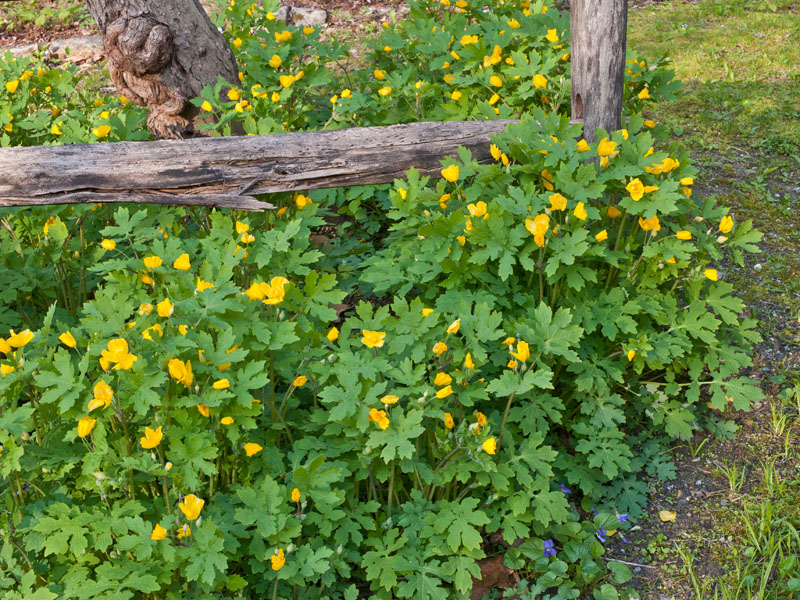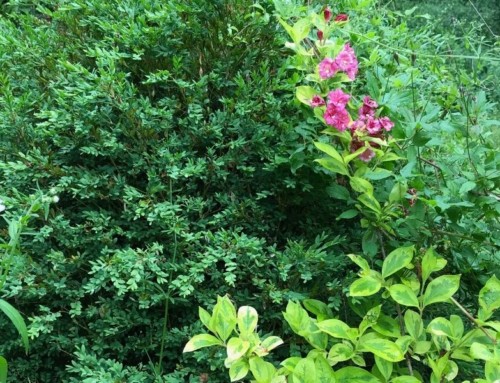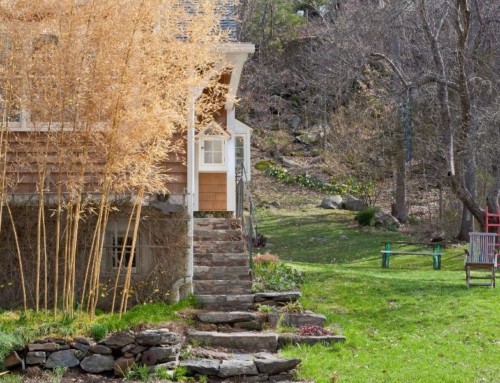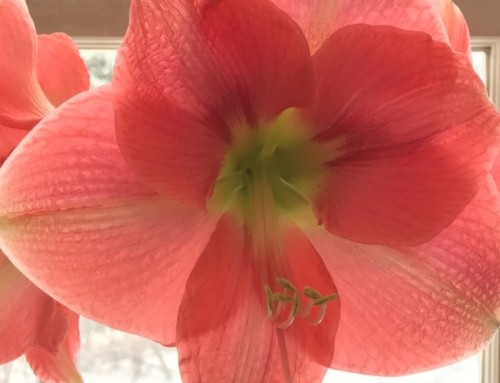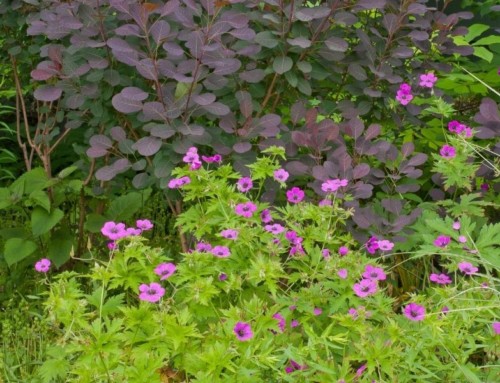Ladybugs are back – crawling over my bathroom mirror and upstairs guestroom windows. Can stink bugs be far behind?
This year I’m buying stink bug pheromone traps – the squish and flush method never keeps them from buzzing my reading light at night.
While you’re outside planting bulbs and cleaning up garden beds
- Look for winter weeds, pull them while they’re small and mulch the gaps. I’m finding lots of little tap-rooted hairy bittercress rosettes (Cardamine hirsuta) in newly worked soil. It annoyingly pelts me with seeds from hair-trigger exploding seedpods if I don’t get it in time. Like the henbit germinating in my veggie beds, it’s edible, but there’s always plenty to harvest in the lawn when I’m hungry.
- Keep spraying deer repellant. Deer establish their feeding patterns in fall. If you don’t convince them that there’s nothing good to eat in your yard, they will camp out all winter. Deer-resistant plants? Forget it – they eat everything on the deer-do-not-eat list once the hungry times hit, even sage.
- Leaves are falling, revealing strangling bittersweet vines twining their way through shrubs and up into the treetops. Hidden in the greenery all summer, now their yellow leaves are a dead giveaway. Cut them and tag for removal if you don’t have time to immediately dig them out – and get ’em while they’re small.
- Like the spring flowering bulbs we’re planting, Viburnum leaf beetles require a chilling period. Females excavate little hollows in tender new growth, covering the egg clusters laid inside with a plug of chewed bark and excrement. Look for lines of these plugs along twigs, snip the twigs and destroy.
- Check hemlocks for signs of infestation by the Hemlock woolly adelgid: fuzzy white egg masses along small twigs at the base of needles, needle loss and grey-tinted foliage. Call your arborist if they’re present; these invasive insects will suck the life out of your trees. Here’s a link to a NY Department of Conservation brochure that shows what to look for.
- Keep removing fluffy flyaway seedheads of plants you let bloom but that you don’t want more of. Do it when they’re soaked with rain or dew, or when they’re glommed together with frost to minimize dispersal.
- A reader wrote me after last month’s “Views” column on wrestling with aggressive beneficial plants:
“Been meaning to thank you for discussing the thuggy aspects of Eupatorium rugosum in your last blog. I like the plant and was thinking of planting a mass of it behind the greenhouse, not far from my tiny spring treasures.
Can see that is not a good idea. It, along with white wood aster, Anemone virginiana, and Stylophorum diphyllum (photo above), will have to make do with being banished to downhill locations.
- One final clue for controlling plants with airborne seeds: make sure you know which way the wind blows.
